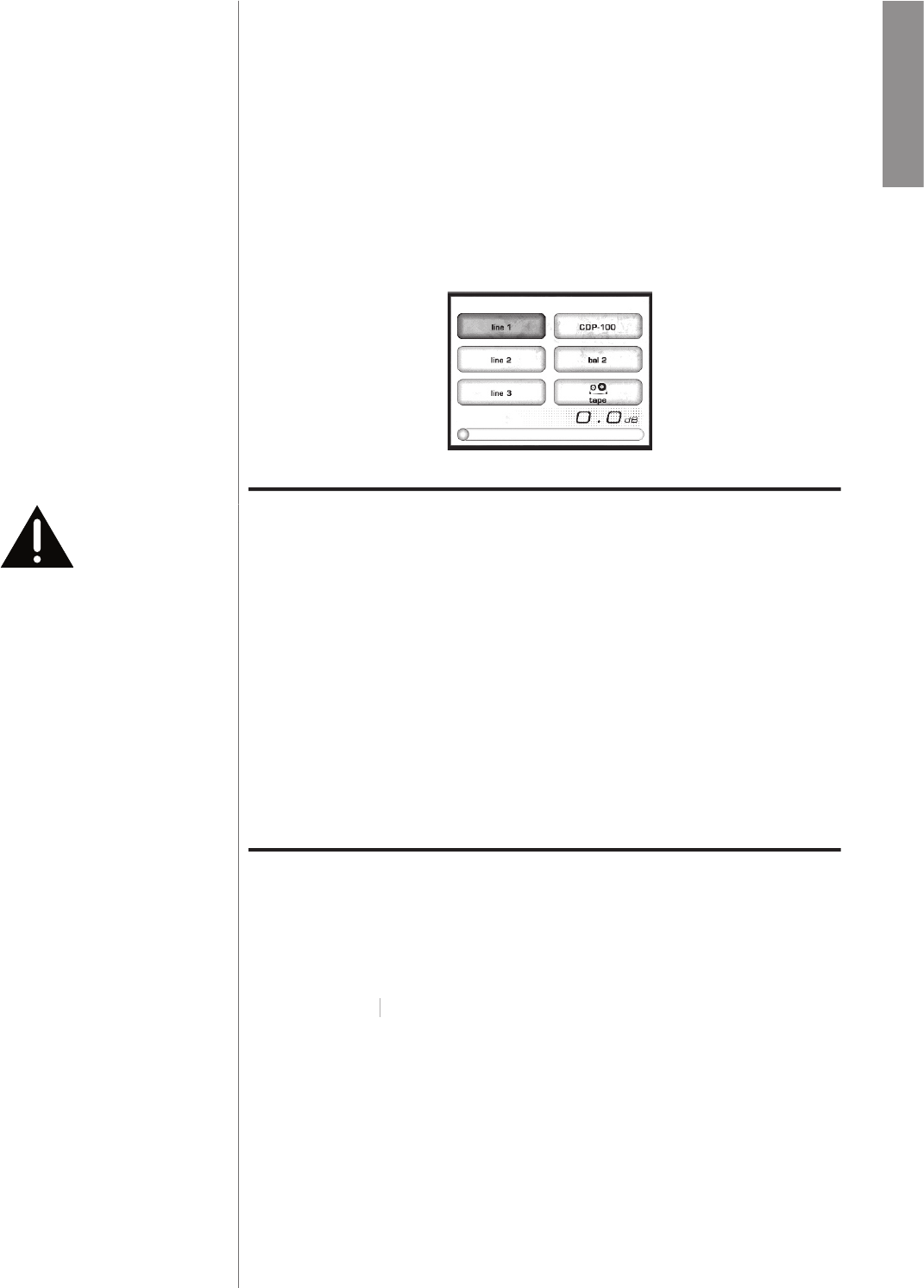
27
ENGLISH
• The
t
button acts like the backspace key on a computer
keyboard, moving the cursor to the left and eliminating any
characters along the way.
• The
u
button moves the cursor to the right, adding characters
along the way. (Change each character to what you want as you go
along, using the
+
and
√
buttons.)
•
The
+
and
√
buttons change the current character through the
available characters. They include all upper and lower case letters
of the alphabet, the numbers 0-9, and a variety of punctuation.
When done, your main display might look like this (note the
change in what would otherwise be the
bal 1
input).
Warning! When an input is renamed ‘SSP’, it becomes a unity
Warning! When an input is renamed ‘SSP’, it becomes a unity
gain input. When such an input is selected, the volume
control of the CP-700 is disabled, all outputs are driven
at line level and the volume indication is removed from
the main menu.
This is useful in situations where the CP-700 is being
used to pass through a signal coming from a component
with its own volume control (e.g. Classé SSP-300
surround sound processor), or when one of its outputs is
sent to a component with its own volume control (SSP-
300). Care should be taken to adjust the volume control
of the other component before selecting the SSP input,
as the resulting volume level may be uncomfortably
loud.
•
input balance
adjusts an input-speci–c balance adjustment to
compensate for the possibility that a particular source might be
slightly imbalanced. This is especially common with turntables,
since even the –nest handmade cartridges are subject to small
channel imbalance problems.
•
input offset
provides a way to compensate for differences in
input offset provides a way to compensate for differences in input offset
output level between various source components. Doing so
can eliminate the sometimes annoying and abrupt changes in
volume encountered when switching between different source
components.


















